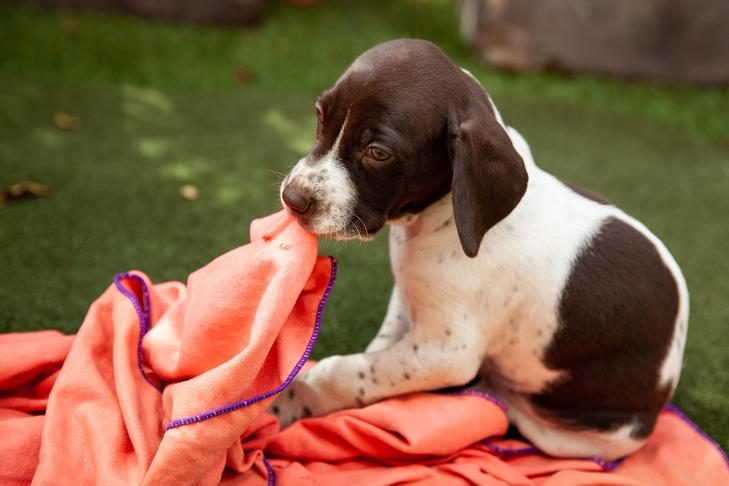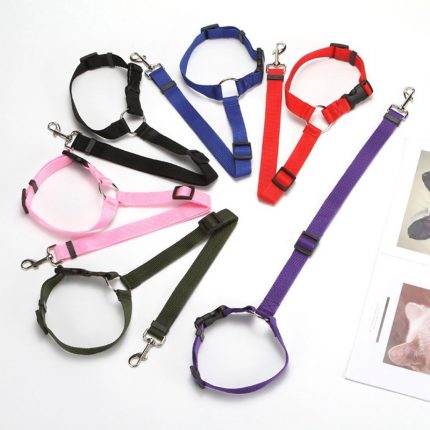Why Does My Dog Sit Behind Me?
Dogs are known for their unique behaviors and quirks, and one common behavior that many dog owners have observed is their tendency to sit or position themselves behind their owners. This peculiar habit often raises questions in the minds of dog owners, leaving them wondering why their furry companions choose this particular spot. While each dog may have its own reasons for doing so, there are several common explanations that can shed light on this behavior.
In this article, we will explore the possible reasons why your dog may choose to sit behind you. Understanding these motives can help deepen the bond between you and your canine companion while enhancing your overall understanding of their needs and behaviors. So, let’s delve into the fascinating world of canine psychology and unravel the mystery behind this seemingly peculiar sitting preference.

Throughout this article, we will consider various factors that may influence your dog’s decision to sit behind you. These factors include their instinctual behaviors, their desire for security and protection, their need for social connection, and their inherent pack mentality. By examining these factors, we can gain valuable insights into the complex dynamics of the human-dog relationship and better comprehend our furry friends’ actions.
Furthermore, we will also discuss the potential benefits and drawbacks of this behavior. While it may be endearing to have your dog snuggled up behind you, it’s important to address any potential issues that may arise from this habit. We will explore the impact on your dog’s comfort, their level of dependence, and their overall well-being.
In the following sections, we will delve deeper into each of these aspects, providing you with a comprehensive understanding of why your dog may choose to sit behind you. By the end of this article, you will be equipped with practical knowledge and recommendations to ensure a harmonious and fulfilling relationship with your furry companion.
So, let’s embark on this enlightening journey and uncover the reasons behind your dog’s choice to sit behind you.
Exploring the Reasons Why Dogs Choose to Sit Behind Their Owners
Instinctual Behaviors
One possible reason why your dog may choose to sit behind you is rooted in their instinctual behaviors. Dogs are descendants of wolves, which were pack animals. In a pack, the leader or alpha wolf would typically sit or stand at the front, while the rest of the pack would position themselves behind the leader. This hierarchical structure ensured safety, as the leader would protect the pack from potential threats. Your dog’s choice to sit behind you may be an instinctual way of seeking protection and security, as they view you as their leader.
Desire for Security and Protection
Another explanation for your dog’s preference to sit behind you is their innate desire for security and protection. Dogs are naturally social animals and seek comfort in the presence of their human companions. By positioning themselves behind you, they can feel sheltered and shielded from potential dangers. This behavior is particularly common in dogs that may be more anxious or fearful in certain situations. Sitting behind you provides them with a sense of safety and reassurance.
Need for Social Connection
Dogs are known for their strong social bonds with their owners. They form deep emotional connections and seek constant companionship. Choosing to sit behind you may be your dog’s way of expressing their need for social connection. By being close to you, they can feel a sense of belonging and inclusion. It is their way of showing affection and loyalty, as they want to be near their beloved human.
Inherent Pack Mentality
Dogs have a natural inclination towards pack mentality, which stems from their ancestral roots. In a pack, dogs establish a social hierarchy, with each member having a specific role and position. Your dog sitting behind you may be a manifestation of their pack mentality, where they see themselves as a follower and you as the leader. This behavior reinforces their understanding of their place within the family unit and their respect for your authority.
Conclusions
In conclusion, understanding the unique behaviors of our canine friends, such as why a dog chooses to sit behind its owner, can deepen the bond between pets and their humans. For more insights on this behavior, visit geepets.com, where you’ll find a comprehensive article titled “Why Does My Dog Sit Behind Me,” exploring the various reasons behind this endearing behavior.
Additionally, for further reading on canine behavior and how to foster a positive relationship with your pet, consider visiting the American Kennel Club’s website at akc.org. Both resources offer valuable information to help you understand and navigate the intricacies of living with your four-legged family member.

Practical Recommendations for Dealing with Your Dog’s Preference to Sit Behind You
1. Provide Alternative Comfortable Spaces
If your dog consistently chooses to sit behind you, it’s important to provide alternative comfortable spaces for them. Set up cozy dog beds or blankets in different areas of your home where your dog can retreat to when they seek relaxation or security. This will give them options and encourage them to explore other comfortable spots.
2. Encourage Independence
While it’s natural for dogs to seek closeness and companionship, it’s also essential to foster their independence. Encourage your dog to spend time alone in designated areas, such as a crate or a specific room. Gradually increase the duration of their alone time, ensuring they have toys and activities to keep them occupied. This will help reduce their dependency on constantly being behind you.
3. Positive Reinforcement Training
Utilizing positive reinforcement training techniques is a pivotal approach when addressing the question, “Why does my dog sit behind me?” Whenever you observe your dog choosing to sit in a different location, it’s an opportunity to implement these techniques to redirect their behavior. Rewarding them with treats, praise, and affection when they opt for a new spot can significantly help. This method not only addresses the concern “Why does my dog sit behind me?” but also helps them associate the new sitting location with positive experiences.
By consistently applying positive reinforcement, you reinforce the idea that sitting behind you is not the only option, effectively answering the question “Why does my dog sit behind me?” This approach fosters a learning environment where your dog is encouraged to explore alternative behaviors, knowing that they will be rewarded, thus making the query “Why does my dog sit behind me?” less of a recurring theme. Through this strategy, your dog learns to understand that different choices lead to rewards, gradually diminishing the behavior that led you to wonder, “Why does my dog sit behind me?” in the first place.
4. Create a Safe and Secure Environment
Ensuring that your home environment is safe and secure for your dog is paramount, especially when pondering the question, “Why does my dog sit behind me?” Removing any potential hazards, providing ample access to water and food, and creating a peaceful atmosphere not only contribute to their well-being but also address the query, “Why does my dog sit behind me?” By establishing a secure environment, your dog may feel less inclined to constantly seek protection behind you, thus offering insight into the concern, “Why does my dog sit behind me?”
Creating a haven where your dog feels safe can significantly diminish the frequency of behaviors that lead you to wonder, “Why does my dog sit behind me?” It’s crucial to understand that when dogs choose to sit behind their owners, it might be a sign of seeking security or comfort. Therefore, by addressing the underlying question of “Why does my dog sit behind me?” through ensuring their environment is devoid of stressors, you’re directly impacting their need to find solace in your presence in such a manner.
In conclusion, the steps you take to make your home a safe and welcoming space for your dog are directly connected to the behavioral patterns that might have you asking, “Why does my dog sit behind me?” With a focus on eliminating their reasons for feeling anxious or insecure, you’re likely to see a decrease in the behavior that sparked the question, “Why does my dog sit behind me?” in the first place, fostering a more independent and confident companion.
5. Seek Professional Guidance
If you find yourself frequently questioning, “Why does my dog sit behind me,” and this behavior becomes excessive or causes distress, it may be beneficial to consult with a professional dog trainer or behaviorist. They can assess your dog’s specific needs, particularly addressing the question of “Why does my dog sit behind me?” and provide personalized guidance to address any underlying issues.
A professional can help you develop a training plan that not only tackles the question of “Why does my dog sit behind me?” but also encourages your dog to feel secure and comfortable in various locations. Their expertise can offer insights into the behavior, ensuring that the answer to “Why does my dog sit behind me?” is comprehensively addressed, leading to a happier and more confident pet.

6. Understand Your Dog’s Body Language
If you’re pondering, “Why does my dog sit behind me,” and this behavior becomes excessive or causes distress, it may be beneficial to consult with a professional dog trainer or behaviorist. They can assess your dog’s specific needs and provide personalized guidance to address any underlying issues related to the question of “Why does my dog sit behind me?”
Our featured products:
A professional can help you develop a training plan that encourages your dog to feel secure and comfortable in various locations, directly addressing the concern of “Why does my dog sit behind me?” This approach ensures that your curiosity about “Why does my dog sit behind me” is met with effective strategies and solutions to foster a healthy, happy relationship between you and your dog.
7. Maintain a Consistent Routine
Dogs thrive on routine and predictability. Establish and maintain a consistent daily routine that includes regular exercise, feeding times, and play sessions. A structured routine can help alleviate any anxiety or restlessness in your dog, reducing their need to constantly seek comfort behind you.
Incorporating these practical recommendations into your daily interactions with your dog can help address their preference to sit behind you. Remember, patience, understanding, and consistent training are key to modifying your dog’s behavior. By creating a balanced environment that meets their emotional needs, you can foster a harmonious relationship and ensure your dog’s overall well-being.















